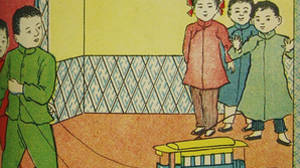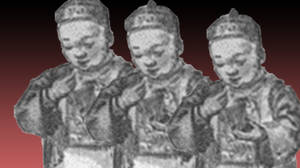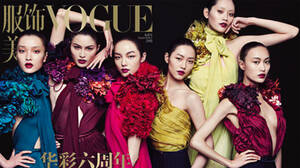Center for Asia Pacific Studies
The Center is San Francisco’s academic gateway to the Asia Pacific, fostering and promoting innovative research, teaching and public programs.
Volume XIII, No. 2: Fall/Winter 2015-16
Asia Pacific Perspectives (ISSN: 2167-1699) is an international, peer-reviewed electronic journal that promotes cross-cultural understanding, tolerance, and the dissemination of knowledge about the Asia Pacific. The editors welcome submissions from all fields of the social sciences and the humanities that focus on the Asia Pacific, especially those adopting a comparative, interdisciplinary approach to issues of interrelatedness in the region. The journal facilitates academic discussions among both established scholars in the field and advanced graduate students. APP is published twice each year by the University of San Francisco Center for Asia Pacific Studies.

Toys may be small things, but their relevance is great, argued a Chinese toy advertisement in 1931. Indeed, from the turn of the century, playthings had acquired a very significant role within the Chinese childrearing discourse as tools to shape children, the prospective rescuers of the nation. As a possibly unintended result, both children and toys acquired a marketing value: advertising thus employed them as icons to publicize a wide array of products. At the same time, the nascent toy industry, and some foreign producers, “poached” the new discourse to brand playthings as testimonials and catalysts of what is termed here cognizant modernity.

This paper is a connective case study of Sun-Maid Raisins commercial strategies in the United States and China during the interwar years. It explores in three steps how the California-based company used advertising to bridge Chinese and American consumer cultures, less by reducing the gap than by adapting to Chinese consuming habits and purchasing power. After differentiating the universal/peculiar characteristics of consumers and raisins market conditions in the United States and China, we will examine how the specific organization of Sun-Maid in Republican China proved successful. Like British-American Tobacco and other global companies, Sun-Maid relied on its own distribution system, combining raisin imports and locally-made advertising. Last but not least, a close reading of a Sun-Maid advertisement published in 1928 in the Shenbao (one of the most important newspapers in Shanghai) will serve as a starting point to probe into Chinese and American commercial images. Using historical lenses to analyze their main visual and textual elements, we will discuss how Chinese advertisements merged local/global features of visual culture to invent their own versions of the "sex/women appeal" and the "health appeal", which both enjoyed a worldwide popularity at the time.

Advertisements in Japan are full of haafu – a category denoting people of mixed race or ethnicity used in Japan. Haafu promote quite a wide range of products and services consumed by Japanese people, such as food, cosmetics, clothing, cars, electric appliances, travel, etc. in advertisements. Most haafu have racial heritage as part-Japanese (racial sameness) and as part-non Japanese (racial difference). Their mixed racial heritage appeals to marketers as well as consumers in various degrees. Haafu’s racial ambiguity is also popular among marketers because their multiracial bodies can be read as at one time as that of a foreigner, another time a Japanese, and at others both at the same time, providing a versatility that serves the purposes of marketers. Haafu are useful commodities for marketers, which explains their popularity in advertisements.

Since the 2008 financial crisis, Chinese consumers have become the most lucrative and desirable market for the luxury and fashion industries. Such consumers are the result of China’s nationalist agenda to reform its economy in the 1980s. Ironically, as the Chinese upper and middle classes continue to grow, their buying power continues to be an obstacle for the growth of Chinese domestic luxury brands.

When scholars – especially those outside of China – look for “the archive” (literally “档案” in Chinese), they often can’t find the results they want because “archive” in Chinese has a different meaning than the English term. This short essay will investigate the state of the archive of advertising in China, beginning with the ideas of archive in the past decades and exploring the particularity of archives in China. The author discusses three categories of digital resources available for advertising studies in China: 1) databases of advertisements (or materials including advertisements); 2) websites of advertising history or other materials, and 3) academic resources for advertising studies.